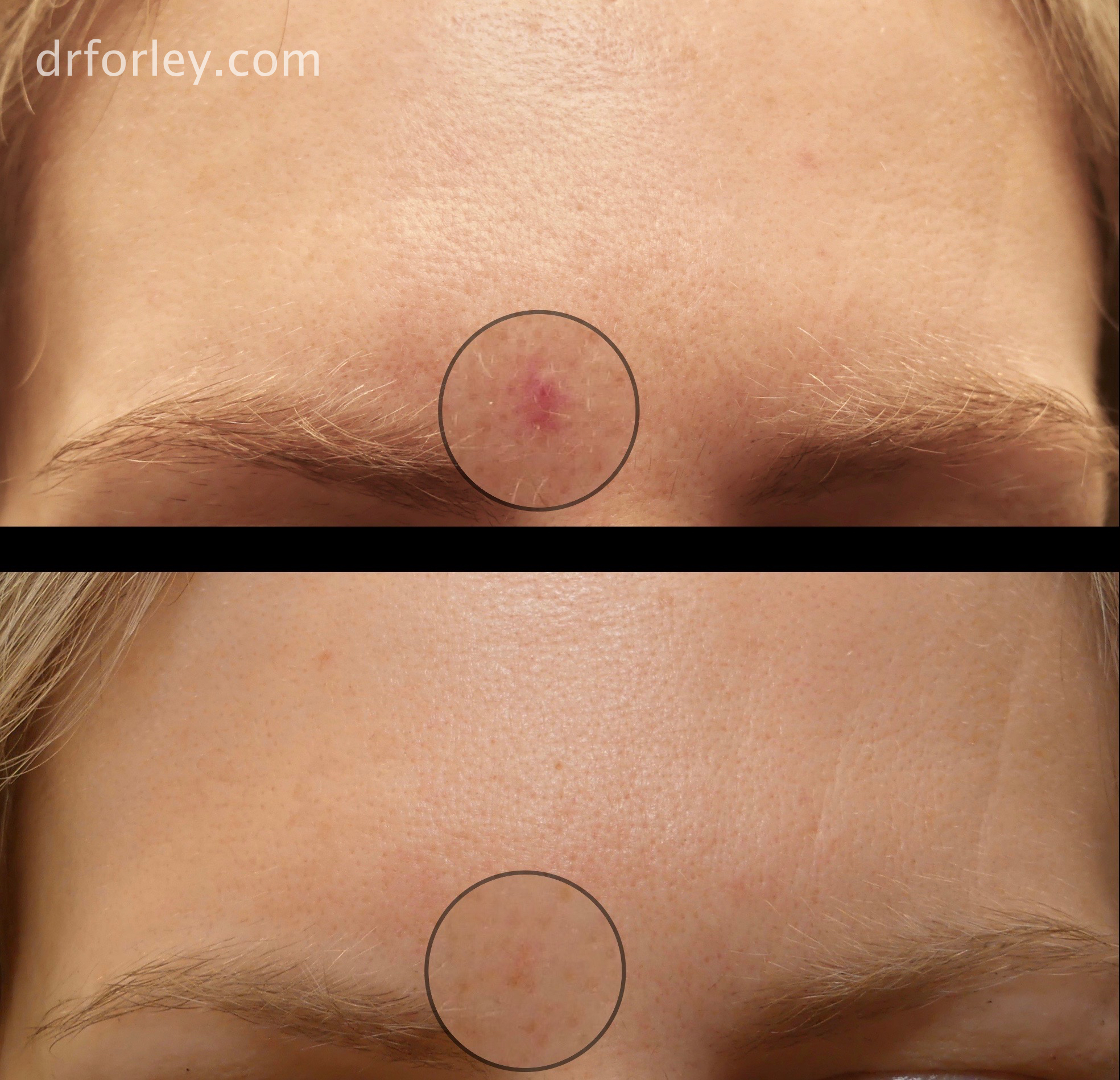Anesthesia involves the use of medicines to block pain sensation during surgery, alter your level of consciousness, and reduce many of your body’s normal stress reactions to the procedure being performed.
The type of anesthesia used for your surgery depends on the extent of the surgery, your medical and allergy history, physical exam, and blood tests. There are four types of anesthesia that Dr. Forley uses for cosmetic procedures: local, IV sedation/twilight, general, and epidural.
Local Anesthesia
Minor surgical procedures can be successfully performed using local anesthesia alone. Dr. Forley administers local anesthetics directly into the surgical area with a small needle, resulting in an immediate numbing effect that lasts up to 60 minutes. At times, small doses of epinephrine are added to constrict the blood vessels, produce less bleeding, and allow the anesthesia to last twice as long.
During liposuction, a technique called tumescent anesthesia is commonly used. A large volume of fluid containing lidocaine and epinephrine is injected into the surgical area. The area remains numb throughout the procedure and frequently for several hours afterwards. This technique is usually combined with intravenous sedation/twilight anesthesia to maximize your comfort during surgery.
Intravenous Sedation
Intravenous (IV) sedation also known as “twilight anesthesia” is a safe and effective method for more extensive surgical procedures that require you to be more relaxed or asleep and is performed by a board certified anesthesiologist in Dr. Forley’s Joint Commission accredited office based surgery facility. Precise amounts of sedating and anesthetic medication are delivered while your comfort level and vital signs are carefully monitored. IV sedation is typically combined with injections of local anesthetic at the surgical site for additional pain control and to minimize bleeding.
IV sedation is a good middle ground between local anesthesia and general anesthesia and is often preferred over general anesthesia because patients recover more quickly with fewer side effects. Furthermore, the anesthesia can be lightened, if desired, to a level called conscious sedation during which you remain awake but your awareness of what is happening to you is decreased. Once the medication is turned off, you will wake up rapidly.
General Anesthesia
General anesthesia is a method of enabling deeper anesthesia that is typically used for more complex or longer surgical procedures. This type of anesthesia is done at the hospital by an anesthesiologist and is administered intravenously or by inhaling medication to provide pain relief, muscle relaxation, and amnesia. During the procedure, you will be carefully monitored by the anesthesiologist.
The advantage to general anesthesia is that it allows you to remain motionless for long periods of time. The disadvantage is the increased risk of side effects, complications, and a longer recovery period. Although the medication dosage is always adjusted for variations in weight and health status, the risk for complications increases when medical problems such as heart or lung disease, obesity, malnutrition, or liver damage are present.
Epidural
An epidural uses a catheter to inject local anesthetic into the epidural space surrounding the spinal cord. The catheter is sited in the lumbar area of the spine and enables procedures to be performed safely once the numbing effect on the nerves, which transmit pain signals from the abdomen and lower body, is in place. Dr. Forley will usually combine an epidural with twilight sedation anesthesia to maximize your comfort during tummy tuck and thigh lift procedures.
Tags: Anesthesia, Plastic Surgery
Written by Dr. Forley on October 18, 2011





